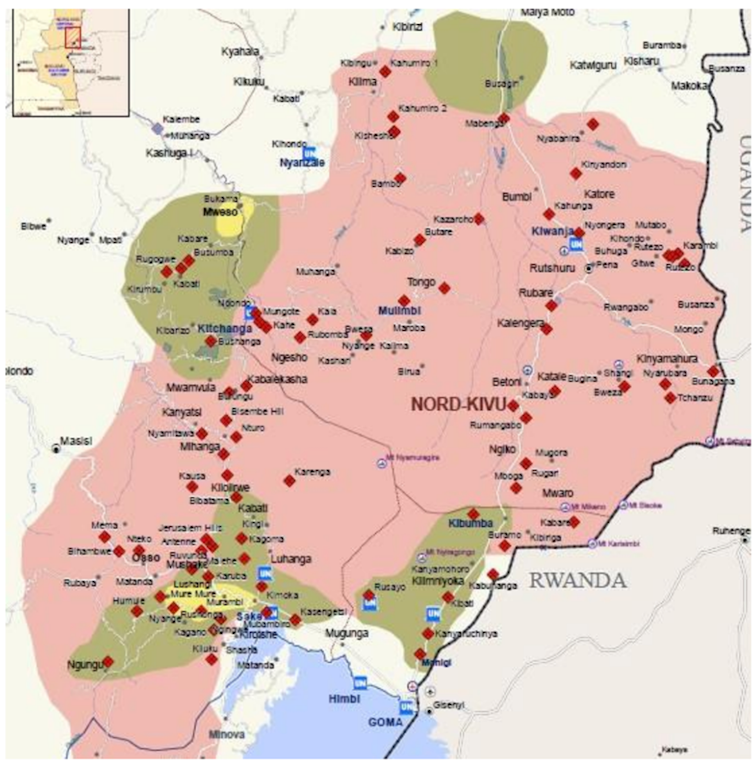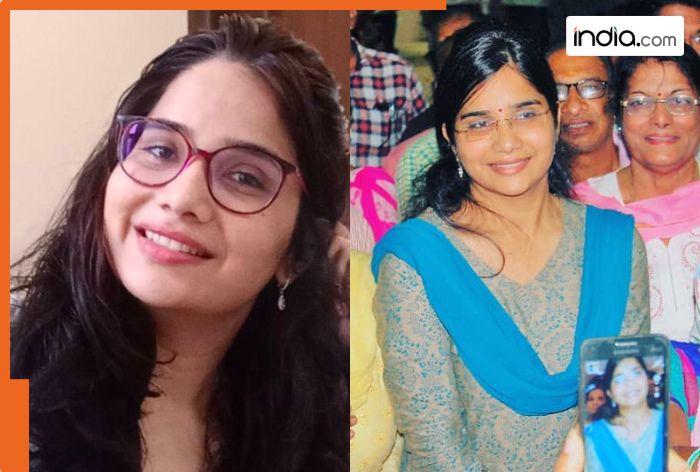In response to the deepening crisis in eastern Democratic Republic of Congo (DRC), the United Nations Security Council established a panel of independent experts in 2023 to examine the situation and provide it with options to address the conflict. In June 2024, the UN released the panel’s final report.
The report provides a devastating account of the unimaginable scale of violence against civilians. It also shows the failure of state actors to work in unison to bring peace to the region. The implicated parties – particularly the governments of Rwanda, Uganda and the DRC – have protested their innocence.
I have researched violent extremism in Africa, especially its effects in southern and central Africa. The unwillingness of ruling elites throughout central Africa to accept responsibility for the war raises the question of what needs to be done to promote peace and development.
A military option is clearly not adequate to address the deep-seated historical, ethnic and resource-based fault lines throughout central Africa, as they play out in the DRC. Relations between the presidents in the region, in particular the DRC and Rwanda, have been strained because of this history.
To augment stabilisation measures, African leaders must pursue diplomatic options. This includes an urgent ceasefire. It must be accompanied by disengagement of forces and neutralising the rebel Democratic Forces for the Liberation of Rwanda, which operates from the DRC. There must also be confidence-building measures between the parties to the conflict.
Before we examine the options, let us unpack some of the UN report’s key findings.
The report identifies the following triggers of war and obstacles to peace:
-
extreme violence – against men, women and children
-
a humanitarian crisis
-
illegal resource extraction
-
new forms of warfare
-
interference of neighbours and international actors.
Deteriorating security and humanitarian situation
VOA
The protracted armed violence has worsened a dire humanitarian crisis. The province of North Kivu accounted for nearly 1.7 million internally displaced persons. Another half a million have spilled over into neighbouring South Kivu since October 2023.
Goma, the capital of North Kivu, faced escalating criminality and civil unrest due primarily to the proliferation of so-called Wazalendo armed militia and criminal gangs, and undisciplined elements of the Armed Forces of the DRC.
The UN panel found that all armed actors recruited and used children in hostilities on an unprecedented scale. The Mouvement du 23 Mars (M23) and the Rwanda Defence Force punished civilians perceived as collaborating with enemy armed groups.
Wazalendo groups thrived on a violent war economy – looting, extorting, kidnapping and murdering civilians. In Ituri province, armed groups engaged in violent confrontations and rivalry, some of them over lucrative gold mining sites.
North Kivu dynamics
In North Kivu, the Islamic State-linked Allied Democratic Forces have intensified attacks against urban centres since mid-October 2023. They’re also active in Uganda. The panel found they committed the highest number of killings, mainly of civilians. The group established strong networks in prisons, particularly in Kinshasa, where its detainees recruited and mobilised combatants and collaborators.
The DRC government continued to use Wazalendo groups to fight M23. Most armed actors in North Kivu benefited from illegal logging and taxation of the transport of wooden planks in the areas they control.
New forms of warfare
The deployment of advanced military technology and equipment bolstered joint M23-Rwandan military operations. They’ve altered the conflict dynamics, partly by grounding all DRC military air assets – including attack and transport helicopters and transport planes.
The UN report describes in great detail the deployment and use of mobile short-range air defence systems, drone-borne mortar shells and guided mortar shells of Israeli manufacture. It says 120mm mortars were used against Southern African Development Community (SADC) troops.
Rapidly escalating M23 crisis
The rapidly escalating M23 crisis carried the risk of triggering a wider regional conflict. Heavy fighting continued between M23, alongside the Rwandan military; against the Congolese military and the Wazalendo coalition, the Democratic Forces for the Liberation of Rwanda and Burundi National Defence Force troops. Private military companies and SADC troops, which were deployed in December 2023, provided operational and military support to the DRC military.

Map obtained by the UN from a confidential source, not endorsed by the UN.
Rwandan military interventions and operations in territories north of Goma extended beyond support for M23 operations. This allowed the Rwandans and M23 to achieve military dominance in North Kivu and rapid territorial expansion to the shores of Lake Edward.
The engagement of the Burundian military in operations against M23 and the Rwandans exacerbated the tensions between Rwanda and Burundi.
What can be done to de-escalate conflict and upscale peace?
Neighbours are unable to make much of a difference. The military option, meant to “freeze” violent conflict and allow humanitarian assistance and diplomatic interventions, has failed.
In 2022 a regional initiative by the East African Community to deploy a regional force to arrest the violent conflict failed and was withdrawn in haste. The SADC has deployed its standby force to the eastern DRC, with a similar purpose, and seemingly similar slim chances of success.
To what extent can diplomatic interventions by the DRC’s neighbours, the African Union, or a combination of these and the UN, make a difference?
AU mediator and Angolan president Joao Lourenco seems to make progress. His efforts are aimed at relaunching the peace process and initiating direct dialogue between the governments of the DRC and Rwanda.
At a ministerial meeting in Luanda on 21 March 2024, senior government officials representing the DRC, Uganda, Burundi, Kenya and Rwanda agreed to recognise the Luanda and Nairobi peace processes, both signed between June and July 2022, as key for achieving peace and security in eastern DRC.
They called for a supervised ceasefire. It would include a process of disengaging forces, neutralising the Democratic Forces for the Liberation of Rwanda, and undertaking confidence-building measures between the parties to the conflict.
However, two issues remain outstanding, according to the UN report. For the Congolese, the disengagement of forces implies the withdrawal of Rwanda from its territory. For Rwanda, it implies a supervised ceasefire between the Congolese military and the M23, accompanied by a process of disengagement of forces.
Regional leaders have a major role to play
The peace commitment by leaders of the DRC, Rwanda, Burundi, Uganda and Kenya, appears to be the only “game in town”. But as the UN report makes clear, in the absence of mediation, there is a real risk of the conflict escalating into a wider regional conflict involving Rwanda, Burundi, Uganda and the DRC.
It is not clear that the lead protagonists – Congolese presidents Felix Tshisekedi and his Rwandan counterpart, Paul Kagame – are prepared to reconcile. Personal mediation is required. The role of outsiders, including the US, European Union, China and Russia, in concert with the UN and African Union, might become key to unlocking progress.
The SADC military mission needs to either enlarge its footprint, and neutralise the M23, in order for the diplomats to pursue mediation, or withdraw. Given its challenges and those that faced the withdrawn East African force in tackling violent extremism and criminal gangs, much strategic thinking is needed before a decision to upscale peace enforcement can be made. This is vital given the new forms of warfare.
If a ceasefire can be negotiated, a robust African Union-led peace support operation, replacing the UN and SADC missions – with dedicated financial and logistics support from international partners – will be needed.
Regional leaders from Angola, South Africa, Kenya and Tanzania need to exert maximum influence on the Congolese and Rwandan leaders to pursue the path to peace.







